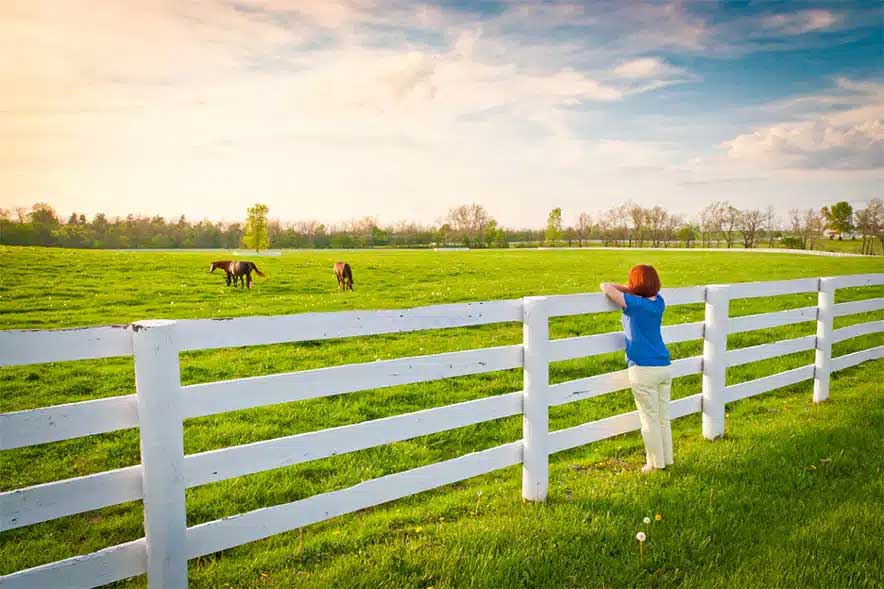
by Nikki Alvin-Smith for Horizon Structures
Fences and horses go together like peanut butter and jelly, and most horse owners are ardent believers and lovers of good fencing for their beloved equines. Here are some tips to help make the best decision for your individual needs.The question of whether it is a good idea to fence the perimeter of a horse farm or to enclose the area immediately around the horse barn is one fraught with variable options and surprisingly perhaps it is not an easy ‘yes’ in all situations. Fences and horses go together like peanut butter and jelly, and most horse owners are ardent believers and lovers of good fencing for their beloved equines. The reality is that time and money often intervene to defer or allay plans for good fencing practices.
The expense of fencing a large property is a huge burden to finance and with prices for lumber as high as the larches of Alaska the chance that most horse owners can afford such a massive undertaking are remote. While electric fences and cheaper options that may be horse friendly enough exist (barbed wire being totally inappropriate for horses), the necessary labor and time needed to complete the perimeter horse farm fence project can overwhelm even the most avid of workers. Whether ‘tis nobler in the mind to suffer the slings and arrows of outrageous fortune where no horse ever escapes a stall or paddock, or to take arms against a sea of troubles that come along with those Houdini horses, or to oppose the human momentary lapses in memory that occur leaving gates open or latches undone, is something to carefully ponder.
Here are some tips to help make the best decision for your individual needs.
Who Lets The Horses Out?
If the barn is to be used by children, then their safety is the top priority. The likelihood of a pony getting loose, a child falling off their mount or being dragged by an equine, or a horse wandering out of a stall is much more likely with the average ‘little’ horse handler and rider than the adult version.
If fencing the barn area off from other areas of the property is not viable due to space restrictions, then for center aisle barns it is a good idea to have a barrier at each end of the aisle even during summer months, in the form of a safety bar or simple latched gate.
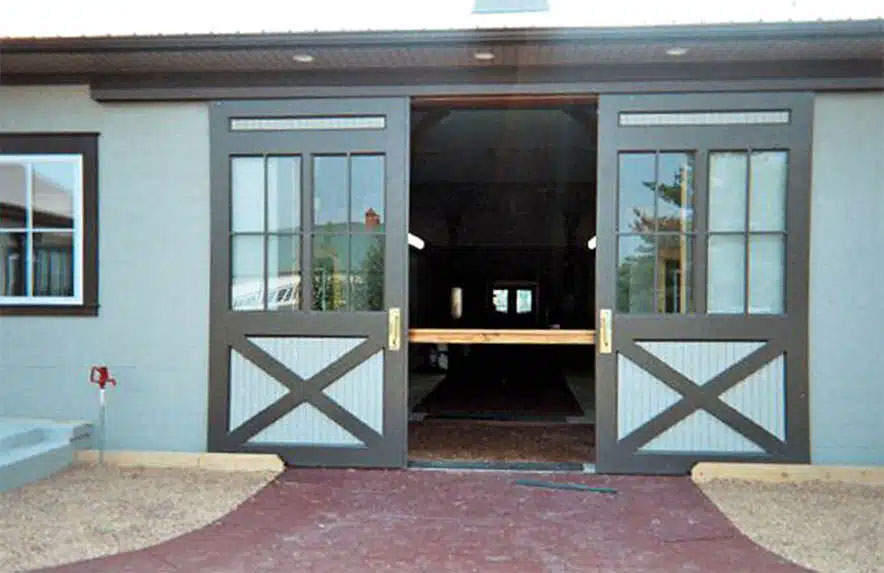
This precautionary barrier not only stops equines leaving the building, it also prevents a bolting or uncontrolled horse from galloping into the barn whether it is mounted or unmounted. The former can result in serious rider head injury. And as anyone that has found themselves facing down an equine barreling down the aisleway toward them can attest, it is not a good feeling.
If the barn is to be used as a boarding facility then the influx of equestrians and their friends and family that may be less ‘horse smart’ than the average equine aficionado, then a horse barn fence is also a good idea.
Sectioning the horse use area from the parking area can prevent damage to both horses and vehicles.
Turning horses in and out is often a cause of concern as a confined equine will likely express his joy at being on his way to the field en route to the space and can become a helium balloon on the end of the rope. In this case the area around the barn that is fenced may incorporate direct access to the paddocks that are predominantly utilized on a daily basis.
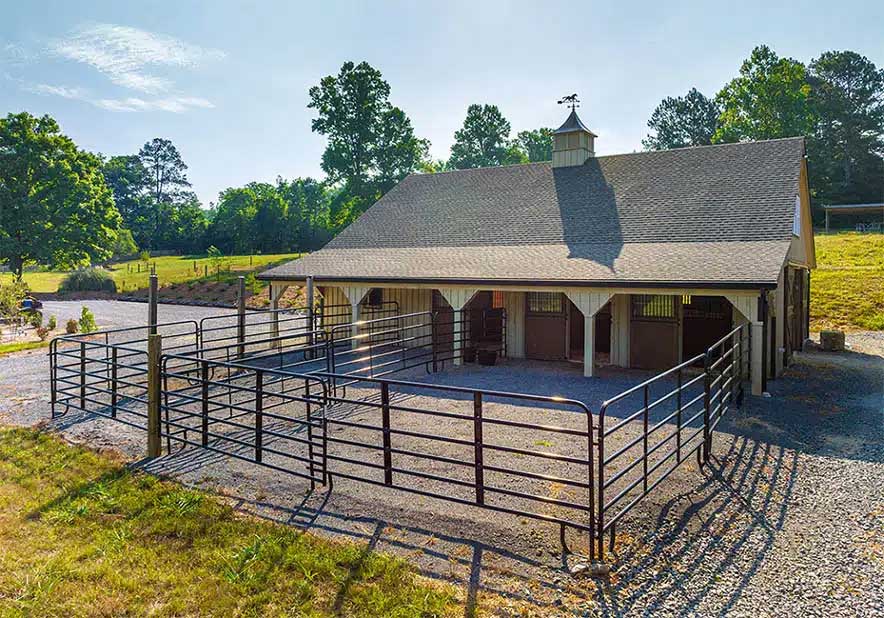
The paddock fencing itself may also serve as a barrier fence in some areas if the development of the pasture space has been well planned in advance of locating the barn and other horse related structures. This can save a considerable amount on additional fencing costs.
The exterior Dutch Door stable set up that facilitates direct access to a lanai or small dry lot will require substantially sturdier fencing than larger areas in order to maintain its integrity with horses living in close quarters in a restricted space.
Bear in mind that access for tractors, UTVs, ATVs and larger equipment such as hay wagons and delivery equipment to the barn will likely be necessary, so any fencing should be gated with sufficient space to allow these vehicles to turn around if possible or at a minimum back in without difficulty.
Type of Horses Being Housed
There is a big difference between breeds of horses and their level of energy and activity. Before determining any fence placement or its type, height and breadth of segments also consider the type of horses being stabled or kept on the property.
Large breeds, such as warmbloods and draft horses, may require a more substantial fence raised above 5 feet height and gateways need to be large enough to accommodate their passage through the space without hitting their hips on fence posts.
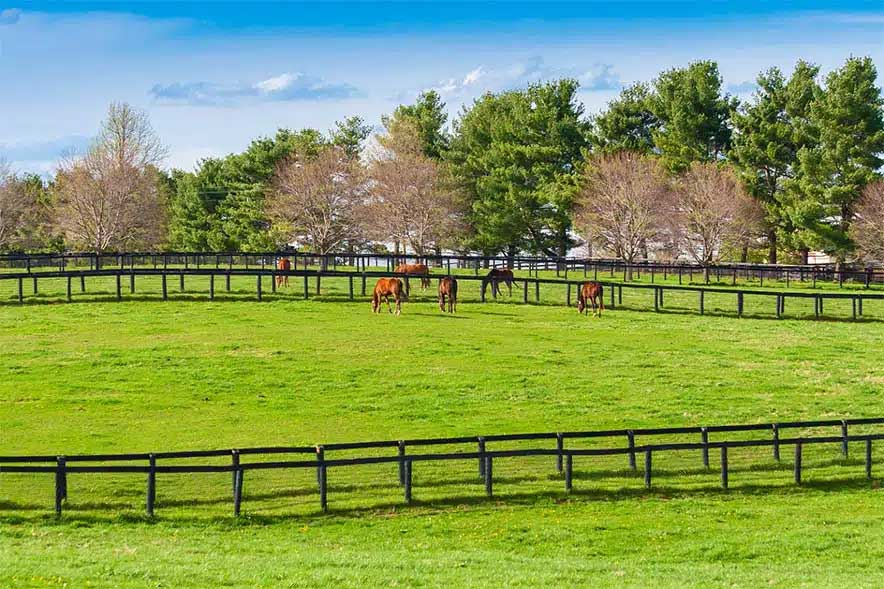
Other breeds may require a special approach in regard to the amount of space available for handling. For example, a stable full of racing age Thoroughbreds are usually handled by professional horse folks who often prefer to keep horses in areas with plenty of room devoid of obstacles or encumbrances to allow for their charges expressive antics to be managed without likelihood of impalement.
Proximity to Roads and Traffic
Heavy traffic, blind corners and narrow roads that are in close proximity to the horse property, and its barn and paddocks, mean the property will warrant a secondary fence (in addition to the primary field fence) around the perimeter and a gated entrance as a safety barrier. When it comes to protecting your horses from escaping onto a busy road, two fences are better than one.
Remember fences not only keep horses in, but they also keep unwanted visitors out.
Poisons, Pets and Protections
Fencing off areas of the garden that may contain trees, plants or shrubs that are toxic to horses such as black walnut or hemlock trees, yew or rhododendron bushes, lily of the valley or ivy groundcover, is a good safety precaution.
A horse barn fence can also provide an efficient barrier to neighborhood dogs, tick-infested deer, and errant wildlife visitors such as coyotes.
When determining the placement of any fence always consider the benefits to those on both sides of its siting.
Fences Make Good Neighbors
Your neighbors won’t appreciate a horse trampling their beds of budding perennials or tearing up their pristine lawn with those perfectly shod hooves. It is important to keep your horses and any other livestock or pets, on your property at all times.
Ensure that you honor the survey pins and markers and any zoning restrictions as to set back distances before purchasing and installing any fence.
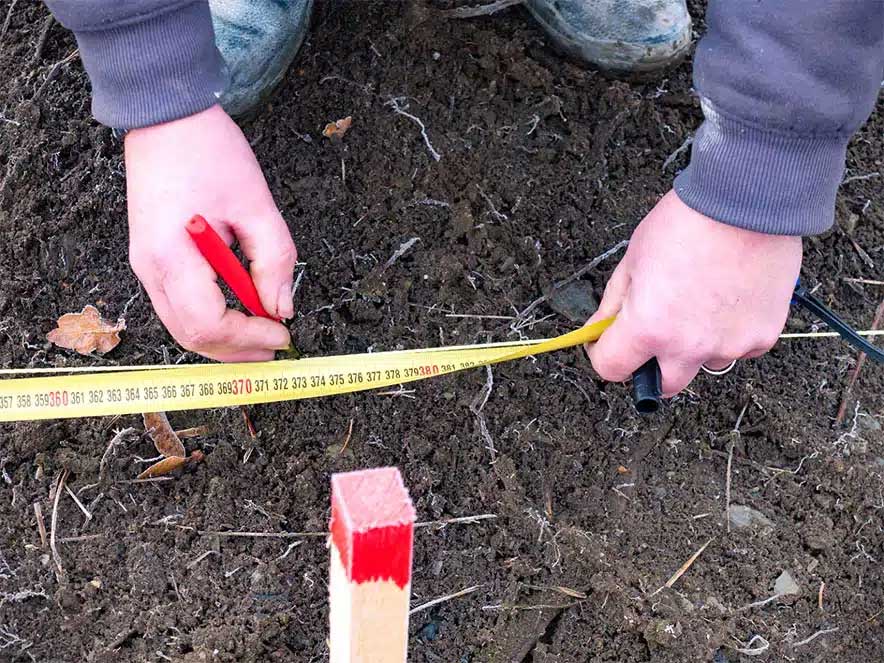
As a horse owner be aware that you are liable for any damage your horse(s) causes, and this could range from a serious car accident where a vehicle hits your horse on a road to an errant kick your horse lands on someone’s parked car, even if it is parked on your own property.
Homeowner insurance policies rarely cover liability issues that arise from horse ownership, so check with your insurance agent and ensure you have liability coverage in place regardless of how likely or unlikely you feel your animals may be to cause harm.
Fencing Style and Types
A permanent barrier can be made of plant material not just traditional lumber, vinyl, or metal options. Consider the well-laid British hedgerow as a traditional example of a barrier that effectively creates a shield from ingress and egress.
A perimeter fence that acts as a secondary catchment area could be constructed of weaved willow, fast growing hornbeam or a staggered two line set up of coniferous trees for year-round protection from wind as well as an effective privacy barrier.
If planting a deciduous hedge, consider a mix of horse-safe plants to add depth and longevity to the hedge. Also consider how the fence will be trimmed and maintained.
Distance and Space
If the horse property is big and fencing a large property is too expensive to contemplate, then the option is to add fencing solely to key areas of high risk to protect the horse residents. A fence and gate along the border with the road may suffice, and the horse pasture fence itself may be sufficient to keep most horses safe at home. For additional safety, establish the fence line well back from the edge of the tarmac and in accordance with all local zoning requirements allowing for snow plowing, ditch digging, utility pole access and the like.
If a horse does escape from an individual turnout situation, or all horses are kept in a single herd, then in most instances the horse will stay close to its equine buddies and not wander too far from base.
All At Once
Remember the extra fencing that may be desirable does not have to be installed all at once. Staging the development of the fence barrier into manageable pieces can be done piecemeal, allowing financial refreshment for its costs over time.
Options are to start from the outside in, or the inside out. A new horse barn planted next to an existing house build might do best with a surrounding fence, while a newly subdivided neighborhood might be better managed with an immediate perimeter fence construction to establish the boundary.
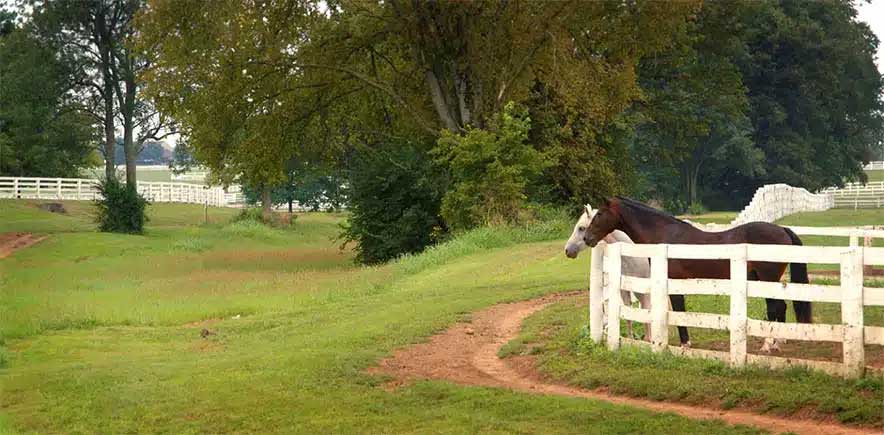
Compare Barn Style – Request a Catalog & Price List
This article originally appeared on Horizon Structures and is published here with permission.
There are more interesting articles in our section on Tack & Farm.
































